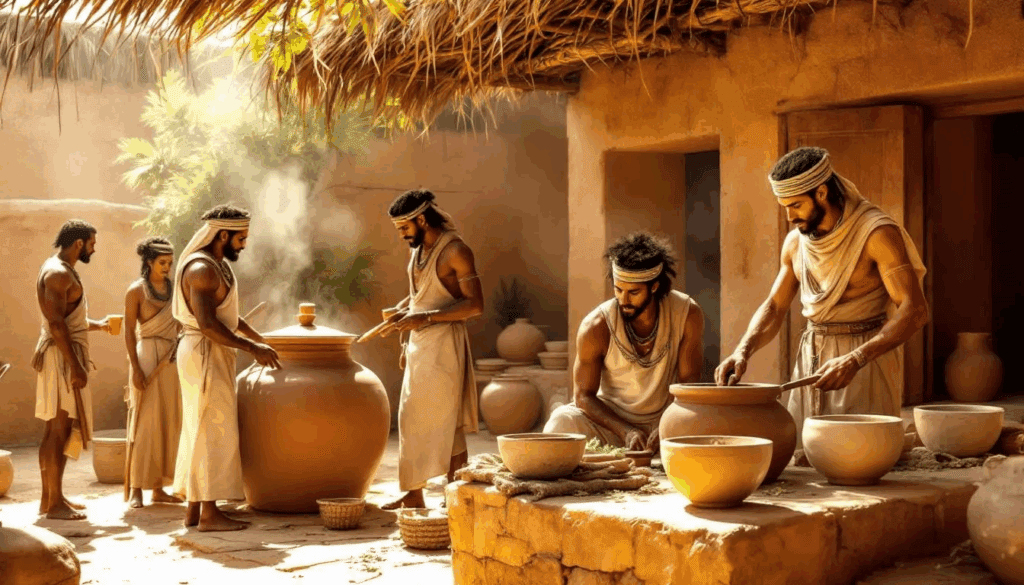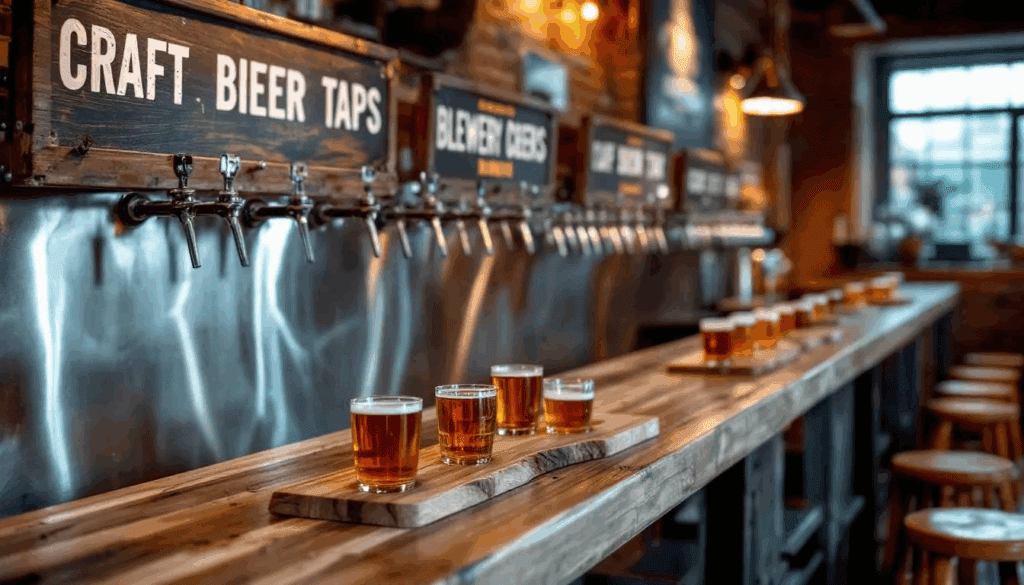Every day, over 2 billion people around the world reach for a beer, making it humanity’s most beloved alcoholic beverage. From bustling pubs in London to quiet breweries in rural Vermont, from ancient Sumerian temples to modern craft beer festivals, beer has maintained its grip on human culture for thousands of years. But why is beer so popular when countless other alcoholic drinks compete for our attention?
The answer lies in a perfect storm of factors that make beer uniquely appealing: its moderate alcohol content provides just the right buzz, its incredible variety offers something for every palate, and its deep cultural roots connect us to both history and community. With annual global production exceeding 133 billion liters and the beer industry projected to reach $1.6 trillion by 2035, beer’s popularity shows no signs of slowing down.
Let’s explore the fascinating reasons behind beer’s universal appeal and discover what makes this ancient beverage the world’s favorite way to unwind, celebrate, and connect with others.
The Global Appeal of Beer
Beer dominates the global alcoholic beverage market in ways that might surprise you. This fermented grain beverage is consumed by over 2 billion people worldwide and accounts for 41% of all alcoholic beverage preferences, making it far more popular than wine or spirits. The numbers tell a compelling story: annual global beer production exceeds 133 billion liters, and beer outsells wine by a ratio of 4:1 globally.

What makes beer’s global reach even more remarkable is its incredible diversity. Beer is available in over 150 different styles, from crisp German pilsners to complex Belgian lambics, from hoppy American IPAs to rich Russian imperial stouts. This variety ensures that no matter where you are in the world, you can find something that suits your taste preferences.
The geographic spread of beer consumption reveals fascinating cultural patterns. Europe leads in per-capita consumption, with the Czech Republic topping the charts at 140 liters per person annually, followed by Germany at 95.2 liters and Austria at 106 liters. Meanwhile, Asia represents the fastest-growing market, with South Korea experiencing remarkable growth driven by rising disposable income and social shifts.
Beer’s accessibility plays a crucial role in its popularity. In many countries, beer costs less than bottled water – in the Czech Republic, a half-liter beer costs about $1 USD. This affordability makes beer accessible to people across different economic backgrounds, contributing to its status as a truly democratic beverage that transcends social and economic boundaries.
Ancient Origins and Cultural Significance
The story of why beer is so popular begins over 13,000 years ago, making it one of humanity’s oldest and most enduring beverages. Archaeological evidence from Natufian ritual feasting sites shows that our ancestors were brewing fermented grain beverages long before they mastered agriculture. This ancient connection helps explain beer’s deep cultural significance across civilizations.
In ancient Egypt and Sumer, beer wasn’t just a drink – it was essential nutrition. Egyptian pyramid workers received daily beer rations as part of their compensation, recognizing beer’s nutritional value and ability to provide safe hydration when water sources were questionable. The Sumerians even dedicated a goddess, Ninkasi, specifically to brewing, highlighting beer’s sacred status in their society.
Beer’s historical nickname as “liquid bread” reflects its genuine nutritional importance in ancient diets. Before modern food safety and water treatment, beer provided calories, nutrients, and most importantly, a safer alternative to potentially contaminated water sources. The brewing process naturally killed harmful bacteria, making beer a practical health choice for our ancestors.

This cultural significance persists today through traditions like Munich’s Oktoberfest, which attracts 6 million visitors annually, celebrating beer’s role in bringing communities together. These festivals demonstrate how beer continues to serve as a cultural bridge, connecting people to their heritage while creating new shared experiences.
The ancient origins of brewing also explain beer’s presence in religious and ceremonial contexts across cultures. From medieval monastery brewing traditions to modern wedding toasts, beer has maintained its role as a beverage that marks important occasions and brings people together in celebration.
Perfect Balance of Flavor and Alcohol Content
One key reason why beer is so popular lies in its perfect balance of flavor and alcohol content. Beer’s moderate alcohol content of 4-6% ABV provides a pleasant buzz without the overwhelming intoxication that comes with spirits or the sometimes heavy feeling of higher-alcohol wines. This sweet spot allows people to enjoy multiple beers over extended social sessions while maintaining conversation and connection.
The taste of beer offers something unique in the beverage world. Two main beer families – lagers and ales – provide vastly different flavor profiles. Lagers, fermented at cooler temperatures, offer clean, crisp tastes that refresh and cleanse the palate. Ales, brewed at warmer temperatures, deliver fuller, more complex flavors that can range from fruity and floral to rich and roasty.
Beer’s signature characteristic comes from the interplay between hops and malt. Hops provide bitterness that balances the sweetness from malted grains, creating a refreshing taste that appeals to many palates. This balance explains why even people who initially dislike beer often find styles they enjoy among the hundreds of available varieties.
The fermentation process adds another layer of complexity. Yeast doesn’t just create alcohol – it produces esters and phenols that contribute fruity, spicy, or earthy flavors. Different yeast strains can transform the same base ingredients into completely different taste experiences, giving brewers endless creative possibilities.
Modern brewing innovations have expanded beer’s flavor potential even further. Craft brewers experiment with ingredients like fruits, spices, coffee, chocolate, and barrel-aging techniques. This experimentation means that beer styles continue to evolve, offering new taste experiences that keep people interested and engaged with the beverage.
Social Connection and Community Building
Beer serves as more than just an alcoholic beverage – it functions as a social lubricant that fosters conversation and connection in casual settings. The moderate alcohol content allows for extended drinking sessions that encourage meaningful interactions, making beer the perfect companion for everything from casual after-work gatherings to major celebrations.
Pubs and breweries function as what sociologists call “third spaces” – locations outside of home and work where communities form and social bonds strengthen. These establishments create environments where strangers become friends, where regular customers develop relationships with bartenders and fellow patrons, and where neighborhoods build their social health through shared experiences.

The social ritual of drinking beer creates shared experiences that span generations and cultures. Whether it’s sharing a round with coworkers, toasting at weddings, or bonding over beer at sporting events, these moments create memories and traditions that strengthen social connections. Beer’s lower alcohol content compared to spirits makes it ideal for these extended social interactions.
Beer culture encourages participation and inclusion in ways that other alcoholic beverages often don’t. While wine culture can seem intimidating with its complex terminology and ritualistic service, beer culture tends to be more welcoming and accessible. The wide variety of beer styles means there’s truly something for everyone, from light lagers for those new to alcohol to complex barrel-aged stouts for experienced drinkers.
Community breweries have become focal points for local social life, hosting trivia nights, live music, charity events, and neighborhood gatherings. These establishments often source ingredients locally and support community causes, creating deeper connections between the beverage and the people who drink it.
Exceptional Food Pairing Versatility
Beer’s diverse styles complement virtually any cuisine more effectively than most other alcoholic beverages, contributing significantly to why beer is so popular among food enthusiasts. From light lagers that enhance delicate seafood dishes to robust stouts that pair perfectly with chocolate desserts, beer offers unmatched versatility in food pairing applications.
Understanding beer’s fundamental components – hop bitterness, malt sweetness, and body – helps create perfect food pairings. Light, crisp lagers can contrast with rich, fatty foods like fried chicken, while their clean finish cleanses the palate between bites. Hoppy IPAs cut through spicy foods, with their bitterness balancing heat while their citrusy hop flavors complement bold spices.
Beer can contrast, complement, or cleanse the palate during meals more effectively than wine in many situations. A Belgian witbier’s coriander and orange peel notes complement Mediterranean dishes, while a German hefeweizen’s banana and clove flavors enhance desserts and breakfast foods. Darker beers like porters and stouts offer coffee and chocolate notes that pair beautifully with barbecue, aged cheeses, and rich desserts.

The carbonation in beer adds another dimension to food pairing. The bubbles help cleanse the palate and cut through rich, creamy sauces in ways that still wines cannot. This makes beer particularly effective with dishes like mac and cheese, pizza, or cream-based soups.
Beer sommeliers and pairing experts have elevated beer’s culinary status to match fine wines. Many high-end restaurants now offer beer pairing menus, recognizing that beer’s complexity and variety make it an excellent companion to sophisticated cuisine. This culinary recognition has helped beer shed its image as merely a casual drink and establish its place at the finest dining tables.
Economic Impact and Accessibility
The global brewing industry’s massive economic footprint helps explain why beer maintains its popularity across different markets and demographics. This industry employs millions of people worldwide and supports local economies through everything from grain farming to glass manufacturing, from transportation to hospitality services.
Craft breweries have become particularly important economic drivers, revitalizing towns and neighborhoods while attracting tourism and creating jobs. Small breweries often source ingredients locally, supporting regional agriculture and creating economic multiplier effects that benefit entire communities. A single craft brewery can generate dozens of direct jobs and hundreds of indirect jobs in its local area.
Beer tourism has emerged as a significant economic force, generating billions in revenue through brewery tours, beer festivals, and beer-focused travel experiences. Destinations like Belgium, Germany, and Portland, Oregon have built substantial tourism industries around their beer cultures, attracting visitors who spend money on accommodations, restaurants, and local attractions.
The accessibility factor cannot be understated when considering why beer is so popular. Beer is generally more affordable than wine or spirits, making it accessible to broader demographics across different income levels. This affordability, combined with its wide availability, ensures that beer remains a beverage choice for people regardless of their economic circumstances.
Beer’s packaging innovations have also contributed to its economic success and popularity. Over 50% of global beer is sold in cans, which are lighter, more recyclable, and better at preserving flavor than many alternatives. This efficient packaging reduces transportation costs and environmental impact while maintaining product quality.
Health Benefits and Nutritional Value
Moderate beer consumption may offer several health benefits that contribute to its enduring popularity, though it’s important to emphasize that moderation is key. Some studies suggest that moderate beer consumption may support heart health, bone strength, and brain function, though these benefits disappear with excessive consumption.
Beer contains several beneficial nutrients including B vitamins, magnesium, selenium, potassium, and antioxidants derived from barley and hops. These compounds may contribute to beer’s potential health benefits when consumed in moderation. The B vitamins support energy metabolism and nervous system function, while antioxidants from hops may help combat inflammation.
The historical nickname “liquid bread” reflects beer’s genuine nutritional value in ancient diets. While modern diets don’t rely on beer for nutrition the way ancient civilizations did, beer still provides some nutritional content that pure spirits lack. The carbohydrates from malted grains provide energy, while the protein content, though modest, adds to beer’s nutritional profile.
Beer’s natural carbonation aids digestion and provides refreshing hydration, especially after physical activity. Many athletes appreciate beer’s combination of carbohydrates for energy replenishment and electrolytes for rehydration, though sports drinks are generally more effective for serious athletic recovery.
It’s crucial to note that these potential benefits only apply to moderate consumption – typically defined as one drink per day for women and two for men. Excessive alcohol consumption of any kind poses serious health risks including liver disease, addiction, and increased accident risk. The key to any potential beer benefits lies in responsible, moderate enjoyment.
The Craft Beer Revolution
The craft beer movement has exploded since the 1980s, fundamentally changing why beer is so popular among discerning drinkers. Thousands of small breweries now create unique flavors and experiences that were unimaginable during the era of mass-produced lagers. This revolution has transformed beer from a commodity product into an artisanal craft that celebrates creativity and local identity.
Craft brewers experiment with innovative ingredients and techniques that push the boundaries of traditional brewing. From barrel-aging beers in whiskey and wine barrels to incorporating unusual ingredients like fruits, spices, coffee, and even vegetables, craft brewers continuously create new taste experiences. These innovations keep beer exciting and give consumers reasons to explore and discover new favorites.

The craft beer culture encourages exploration and education in ways that mass-market beer never could. Beer enthusiasts seek out rare and limited releases, creating a culture of discovery and collection similar to wine appreciation. Beer festivals, brewery tours, and tasting events have become popular social activities that combine education with entertainment.
Craft beer’s emphasis on quality ingredients and traditional brewing methods appeals to consumers who value authenticity and craftsmanship. Many craft breweries source ingredients locally, creating connections between the beer and its place of origin that mass-produced beers cannot match. This local focus helps build community pride and supports regional agriculture.
The craft beer revolution has also democratized brewing knowledge and techniques. Homebrewing communities share information and techniques, while brewery taprooms often offer educational experiences that help customers understand the brewing process. This transparency and education create more engaged, knowledgeable consumers who appreciate beer’s complexity and craftsmanship.
Craft breweries often function as community gathering spaces that host events, support local causes, and create social connections beyond just serving beer. This community focus helps explain why craft beer has become so popular – it offers not just a better-tasting product, but a more meaningful connection to place and community.
Conclusion
Beer’s extraordinary popularity stems from a unique combination of factors that no other alcoholic beverage can match. From its ancient origins as a nutritional necessity to its modern status as a craft beverage that brings communities together, beer has evolved while maintaining its essential appeal. The perfect balance of moderate alcohol content, incredible flavor variety, social facilitation, food pairing versatility, economic accessibility, and cultural significance creates a beverage that truly offers something for everyone.
Whether you’re enjoying a crisp lager after a long day, exploring complex craft beer flavors, or sharing a round with friends, beer continues to serve its fundamental purpose: bringing people together and enhancing life’s experiences. As the craft beer revolution continues to push creative boundaries and brewers discover new ways to innovate, beer’s popularity shows no signs of waning.
The next time you raise a glass, take a moment to appreciate the thousands of years of history, culture, and craftsmanship that went into creating the world’s most beloved alcoholic beverage. Visit your local brewery, try a new style you’ve never experienced, or simply enjoy your favorite beer with good company – and become part of the ongoing story of why beer remains humanity’s most popular way to celebrate, connect, and unwind.


Leave a Reply